Pricing structure not enough to clinch nation’s energy goals
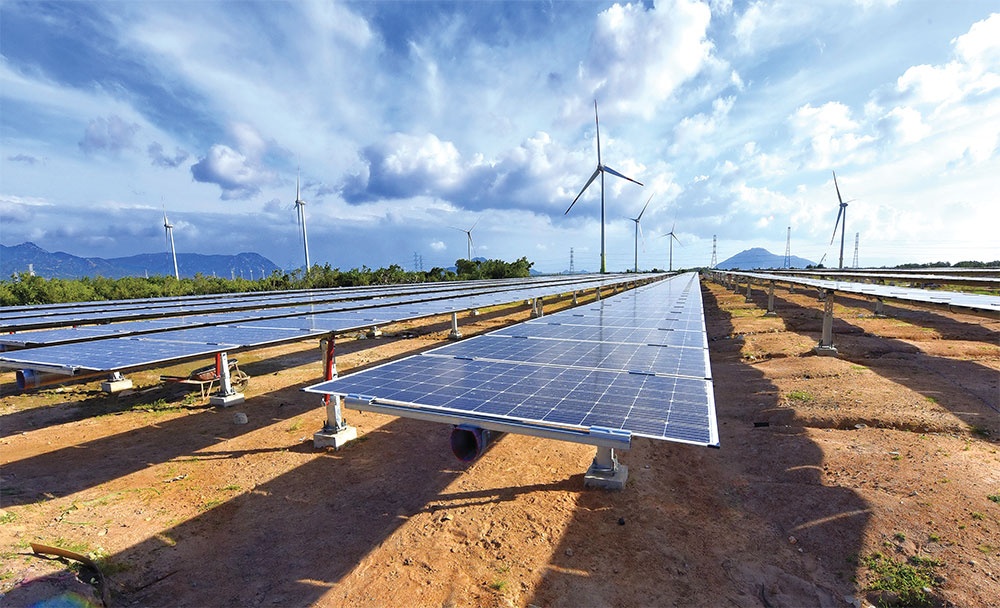 |
| A group of solar power ventures that did not make the 2021 feed-in tariff deadline remain idle and developers want fresh solutions |
Nearly 40 renewable power investors last week asked the prime minister to consider addressing pricing-related inadequacies in renewables development.
The joint letter said that the impact of the pandemic and expiry of the country’s previous feed-in tariffs (FiTs) has resulted in 84 renewable power projects, with total capacity of some 4,600MW, falling behind schedule and failing to achieve commercial operation.
Among these, 28 wind farms and six solar farms with the combined capacity of more than 2,000MW, which have cost an estimated $3.6 billion are eligible to connect to the national power grid, are still waiting for a suitable pricing mechanism. Six solar power ventures have been waiting for such a mechanism for over two years.
The developers last week expressed concerns that they may go bankrupt as the government’s latest pricing band fix are too low for them to make profits. As they did not complete projects in time for the previous FiT schedule, they have asked Prime Minister Pham Minh Chinh to resolve issues with the current solution.
“The Ministry of Industry and Trade (MoIT) has established a new pricing structure for power generation for transitional projects: regardless of the type, the ceiling price for transitional solar power plants is between 5-6.4 cents per kWh, and the ceiling price for wind generation is between 6.8-7.7 cents per kWh,” the document to the PM said.
This ceiling price is 20-30 per cent lower than previous tariffs issued to projects that had been completed before the November 2021 deadline.
Of the $3.6 billion cost of the projects thus far, $2.46 billion comprises bank loans that cannot be recouped. “Long-term, this inadequate pricing mechanism will result in the cessation or postponement of project investment, making it harder to secure commitment to the energy transition,” the document continued.
As the energy-generating price segment for transitional projects in Decision No.21/QD-BC, which was issued in January, is inconsistent with last October’s Circular No.15/2022/TT-BCT and other pertinent documents, it was proposed that the prime minister direct the MoIT to investigate and establish a new price category for electricity generation.
According to Nguyen Anh Khoa, head of Energy and Infrastructure at VinaCapital, these policy issues are a key obstacle that could hinder investment flows and the benefits Vietnam can attain from renewable energy development.
“Limitations in the legal framework, financial ability, and operating capacity are preventing many organisations and corporations from implementing their proposals,” Khoa said.
According to a study by VNDirect Securities published in February on Vietnam’s power sector, the latest pricing for these particular projects will significantly reduce the internal rate of return (IRR) of transitional renewable ventures.
“The IRR of terrestrial solar power projects will only reach 5.1 per cent, while that of onshore and nearshore wind generation will decline to 8 and 7 per cent, respectively, from over 12 per cent of the previous FiT price,” the study said.
The publication of the price bracket in VND rather than USD “does not represent the price slippage element,” the report added.
VNDirect Securities analyst Nguyen Ha Duc Tung remarked that “not all projects would record effective profitability” with the current price range.
“The project’s capital expenditures play a vital part in investment efficiency. Nowadays, capital expenditure accounts for between 70-75 per cent of the whole bid package. The remaining costs pertain to consulting and project management and account for 20-25 per cent,” Tung said.
Therefore, assuming a loan interest rate of 11 per cent and an investment rate of approximately $1.6 million per MW, the IRR of the wind power project will continue at approximately 8 per cent – quite low compared to the former figure of almost 12 per cent.
Presently, the new price bracket for solar electricity (5 US cents per kWh) is based on the fourth calculation option of Electricity of Vietnam (EVN), which is derived using the input parameters of Phuoc Thai 2 and Phuoc Thai 3 solar energy plants. “We believe adopting the computed figures of 106 solar power plants would be more accurate and objective,” Tung stated.
According to VNDirect’s analysis, there are still variables that will help reduce the price of renewable energy in the future. Vietnam is anticipated to collect approximately $15.5 billion over the next five years from the G7 and European Union’s financial support package, the Just Energy Transition Partnership. This is an abundant source of funding with low interest rates and a chance for future debt restructuring for renewable energy projects, VNDirect said.
According to the draft Power Development Plan VIII, the capital cost of such projects will decline over time between now and 2030, which will promote the growth of future projects by partially compensating the need to mobilise capital at low prices for transitional renewable energy projects. Between now and 2045, it is anticipated that the investment cost of farmed solar electricity and onshore wind power will reduce by approximately 1.5 per cent each year, while the cost of offshore wind power will double by approximately 3 per cent.
“Hence, the overall cost of energy may be observed to be declining, and this lower trend will assist businesses in reducing cost pressures in both the short and long term,” Tung said.
| Ngo To Nhien-Executive director Vietnam Energy Transition Initiative
Currently, the most significant factor for a business is the price of power, as this is the price that can ensure the business’ survival. Therefore, the issue that must be addressed is the power tariff for transitional renewable energy plants. However, it is exceedingly hard to negotiate separately for each project and balance the demand in each region, as Electricity of Vietnam does not determine the price. Transitional auctions of renewable ventures can address the current deficiencies; this is the route Vietnam must take in the future. Since there are too many grey areas in a discussion, it is impossible to negotiate a single power price with each investor under the current legislation. The development authority will lose the initiative, and it will be challenging to identify the source of electricity entering the load. Vietnam will inevitably move in this direction in the future, so why don’t we do it now? Auctions can assist power developers in capturing prices close to the market by allowing bids only when there is demand. The state formulates regionally specific programmes and solicits proposals. For instance, if a region requires 5GW, the state runs an auction to sell electricity in that region and negotiates with power companies. This will promote consistency and moderate the load in that region. The Ministry of Industry and Trade can promptly conduct a power auction, but first it must publish a guiding regulation and specify bid materials. Since 2019, multiple variants of the renewable energy auction have been constructed in Vietnam; however, there is currently no legal justification for electricity auctions. |
 | Renewable energy to dispel outages The country is forecast to face bigger power shortages after 2020 due to many power projects in the revised master power plan falling behind schedule, especially in southern provinces. This is forcing Vietnam’s government to address delays and make full use of the potential of renewable energy development. Phuong Thu reports. |
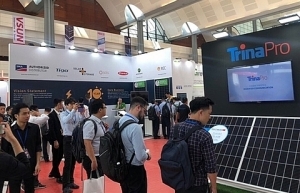 | Renewable sources must be close to consumers Renewable power facilities should be built in localities where strong consumption exists and electricity transmission is direct to avoid power loss, business leaders said on Wednesday. |
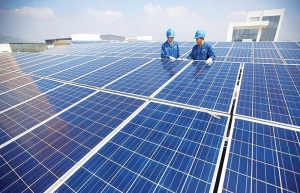 | FiT revamp vulnerable to speculation Despite bankability concerns inherent in power purchase agreements, investing in renewable power is a bright spot in Vietnam as developers rush to take advantage of the current feed-in tariff. Some local developers, however, seem to be just in it for the money, harming the chances of latecomers and potentially causing delays in installation. |
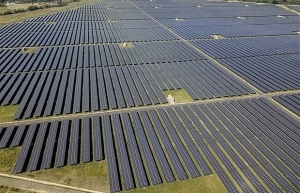 | Vietnam among top three leading nations in renewable energy shift in Asia Pacific Vietnam is among top three nations leading the shift to renewable energy in Asia Pacific, according to the latest research from IHS Markit. |
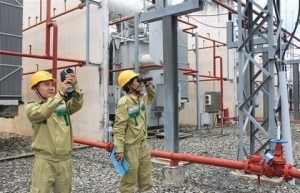 | EVN proposes development of renewable power in northern region EVN has proposed to the Government and relevant ministries and sectors a number of measures to ensure power supply, especially in the northern region, including the issuance of mechanisms to develop renewable energy in the region. |
What the stars mean:
★ Poor ★ ★ Promising ★★★ Good ★★★★ Very good ★★★★★ Exceptional
Related Contents
Latest News
More News
- Schaeffler reports strong early output from Dong Nai solar project (December 12, 2025 | 15:16)
- Forestry conference highlights biodiversity and sustainability goals (December 09, 2025 | 13:35)
- Home Credit honoured among top 10 sustainable companies in trade and services (December 09, 2025 | 12:18)
- SCG and seven member companies honoured in Top 100 Sustainable Businesses 2025 (December 08, 2025 | 09:00)
- Nestlé Vietnam pioneers sustainable development and promotes business connections (December 06, 2025 | 12:09)
- CSI 2025 highlights rise of Vietnam’s green champions (December 06, 2025 | 09:00)
- Acecook Vietnam named among top 100 sustainable businesses (December 06, 2025 | 08:00)
- Vietnam’s forest carbon credits draw global interest (December 05, 2025 | 17:41)
- Coro Energy to launch BESS Pilot in Vietnam (December 04, 2025 | 15:12)
- Vietnam strengthens energy storage pathway (December 04, 2025 | 15:05)


 Tag:
Tag:






















 Mobile Version
Mobile Version